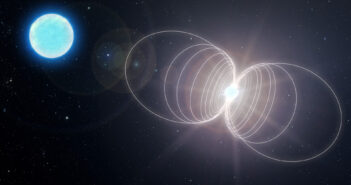
Features
A Unified Explanation for Fast Radio Bursts
Researchers examine the possibility that one-off and repeating fast radio bursts could both arise from magnetars.

Researchers examine the possibility that one-off and repeating fast radio bursts could both arise from magnetars.